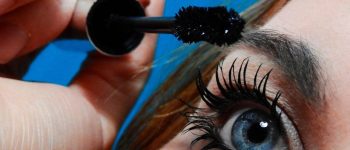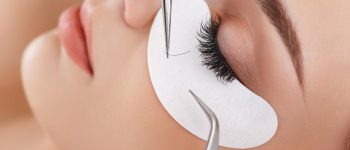Eyelash mites, known as Demodex, are tiny microscopic mites that naturally occur on our skin. While these mites can be beneficial in small numbers, an infestation can lead to uncomfortable symptoms on the eyelids. Although not typically dangerous, excessive eyelash mites can cause inflammation, infections, and vision problems that require treatment. In this article, we explore the causes, symptoms, and treatment options for eyelash mite infestations.

Understanding Eyelash Mites
Demodex mites are a type of mite that feeds on dead skin cells and occurs naturally on hair follicles. These mites are present on almost everyone’s skin, regardless of hygiene levels. However, their population tends to increase with age and poor hygiene. While small amounts of eyelash mites contribute to a healthy skin microbiome, an overabundance can lead to skin and eye complications.
Are Eyelash Mites Harmful?
Eyelash mites are primarily responsible for a condition called Demodex blepharitis, which refers to eyelid inflammation. Blepharitis caused by Demodex mites is not highly dangerous or contagious, but it can be uncomfortable and recurrent. In most cases, permanent damage to eyesight is unlikely to occur.

Causes of Eyelash Mite Infestations
While eyelash mites occur naturally on the skin, certain underlying conditions can lead to an increase in their population. These conditions include rosacea, dermatitis, inflammatory acne, alopecia, skin infections, weakened immune system, and HIV. People with these conditions may produce more dead skin cells or dandruff, which provide a food source for the mites to thrive.
Symptoms of Eyelash Mite Infestations
Symptoms of eyelash mites can range from mild to severe, depending on the size of the infestation and the presence of underlying skin conditions. Mild cases may exhibit no noticeable symptoms, while moderate cases can cause itchiness, redness, and dry eyes. Advanced cases may include inflammation, crusty and sticky eyelashes, blurry vision, and scaly patches of skin. Those with pre-existing skin conditions may experience temporary worsening of their condition.
Treatment Options for Eyelash Mites
The treatment of eyelash mites focuses on removing crusts from the eyelids and preventing the mites and their eggs from thriving. For mild to moderate cases, at-home treatments such as warm compresses, gentle eyelid scrubbing, and regular cleaning of the eyes and face are recommended. In severe cases or when bacterial infection is present, medical intervention may be necessary, including the use of antibiotic eyelid creams or steroid eye drops.

Innovative Approaches to Eyelash Mite Treatment
For stubborn or chronic cases of eyelash mite infestations, several specialized treatments have been developed. These include:
- Avenova: A daily eyelash and lid hygiene system that utilizes hypochlorous acid to destroy mites and their toxins.
- Blephadex: An in-office treatment performed by eye doctors using a gentle eyelid cleanser mixed with tea tree oil and coconut oil.
- Cliradex: Individually packaged wipes soaked in a natural eyelid and lash cleanser containing tea tree oil, designed to be used twice a day.
Precautions to Take With Eyelash Mites
While eyelash mites are generally not contagious, severe infestations can potentially spread. To minimize the spread of mites and alleviate discomfort, it is essential to:
- Avoid close contact with others.
- Refrain from sharing eye makeup or cosmetics that come into contact with the eyelashes.
- Resist rubbing or scratching the eyes.
- Steer clear of oily makeup and lotions.
- Wash sheets and bedding in hot water.
Seeking Prompt Treatment
If you experience noticeable discomfort due to eyelash mites, it is important to seek timely treatment to prevent further complications. A doctor can provide a definitive diagnosis by examining an eyelash under a microscope. Treatment aims to eliminate adult mites, prevent future infestations, and alleviate symptoms. Most cases of eyelash mite infestations can be effectively treated within a few weeks.
For more information, visit Ekilove to explore various skincare solutions and tips.
Eyelash Mites FAQs
- Are eyelash mites contagious?
- What are the symptoms?
- Do you need to see a doctor?
Please note that the information provided in this article should not replace professional advice. For comprehensive guidance, consult with a healthcare professional. To learn more, read our Privacy Policy and Editorial Policy pages.




